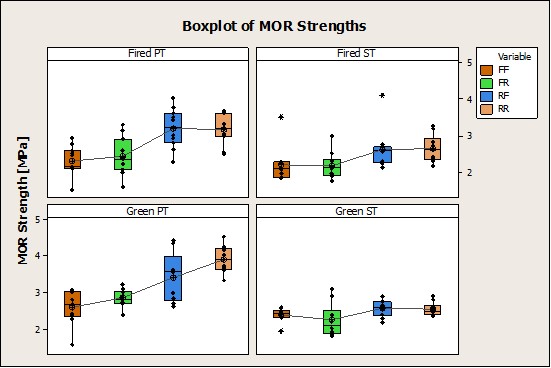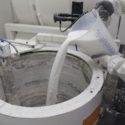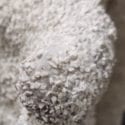Stucco Application Methods – The Practice
In the article below, we will take what we learned in the first article to assess how the different stucco application methods contribute to the final mechanical properties of the shell. There have been a few papers presented previously on the subject from Jones [1]. I would to review the work which I conducted during my PhD and presented at an ICI conference in 2013 [2].
A 2 prime, 3 back up shell system was used for analysis within this paper. The prime slurry consisted of a 75/25 zircon to silica ratio in combination with a large particle binder (Remasol® LP30) and was also polymer enhanced with AdBond® Ultra™ Polymer. The secondary coats consisted of aluminosilicate filler slurry with small particle binder (Remasol® SP30), again with AdBond Ultra polymer. The stuccoes applied to the coats consisted of zircon sand (prime) and aluminosilicate 40 mesh stucco (secondary).
To assess if the prime or back up coat was more susceptible to changes in stucco application method, analysis was carried on 4 different sample sets of varying stucco application method. This is outlined below.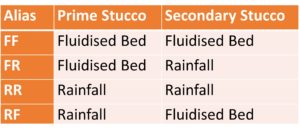
The first property analysed was the thickness of the MOR bars dipped. As can be seen below, there was a very different thickness measured between rainfall sanded and fluidised bed samples.
 Figure 1 Thickness of flat bars with varying stucco applications (N=20)
Figure 1 Thickness of flat bars with varying stucco applications (N=20)
As outlined within my previous articles on the measurement of strength of investment casting shells, the stresses experienced by the shells is not constant throughout the ceramic matrix. Therefore, in this analysis, materials were measured with both the primary coat in tension (PT) and secondary tension (ST). All shells were tested for permeability and strength and presented on box plots.
As can be seen, the MOR strength of the shell is higher for rainfall sanded versus fluid bed samples. As per the box plots and subsequent statistical analysis, this is significant difference. This confirms results from previous studies carried out on this work [1]. There was no real significant difference by changing only one of the two methods of sanding on either prime or back up layers. The permeability results are presented below.
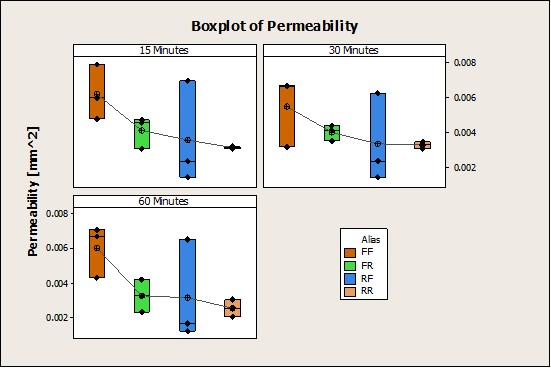
Figure 2 Boxplots of permeability of samples with varying stucco application methods at 3 different sintering times (N=5)
As expected, due to the higher energies as outlined within section 1 of this series the stucco is denser within the rainfall sanded parts, the permeability of the shell is reduced.
Finally, given the various kit available, we were able to utilise SEM and image processing technology to create a stucco map of the first zircon layer across the sample. This is the first example across a large sample size, the different stucco application methods can be microstructurally examined. The reason the zircon layer was chosen, is due to the different density than the silica material within the binder. Multiple SEM Images were taken and then stitched together using Image J to present a stucco map of the prime layer.
 Figure 3a Stucco map for fluidised beds shells
Figure 3a Stucco map for fluidised beds shells
![]() Figure 3b Stucco map for rainfall sanded shells
Figure 3b Stucco map for rainfall sanded shells
As you can see, the fluid bed is thicker than the rainfall material. It is clear the stucco particles within the fluid bed sample are quite a large distance from the binder layer, presenting a less stable adhesion to the previous slurry layer applied. Furthermore, increased presence of the coarser stucco particles within the matrix, reduces the ability of the material to “compact” therefore leaving voids within the shell, which although increases permeability, also increases the areas where cracks can propagate and causes failure defects.
By contrast, the rainfall sanded material forms a denser matrix in more intimate contact with the slurry layer. This will have improved bonding strength to the slurry and therefore higher strength, with lower permeability.
References:
[1] Jones, S., C. Yuan, and S. Blackburn, Fundamental Study of the Microstructure and Physical Properties of Fluidised Bed and Rainfall Sanding Ceramic Shells, . Journal of Materials Science and Technology, 2007. 23(6): p. 706-714.
[2] Dooley, G. et al. “Effect of Stucco Application Method on the Mechanical Performance & Microstructure of Investment Casting Shells”, Oct 9, 2013, 60th ICI Technical Conference, Pittsburgh, PN
< Back to insights
